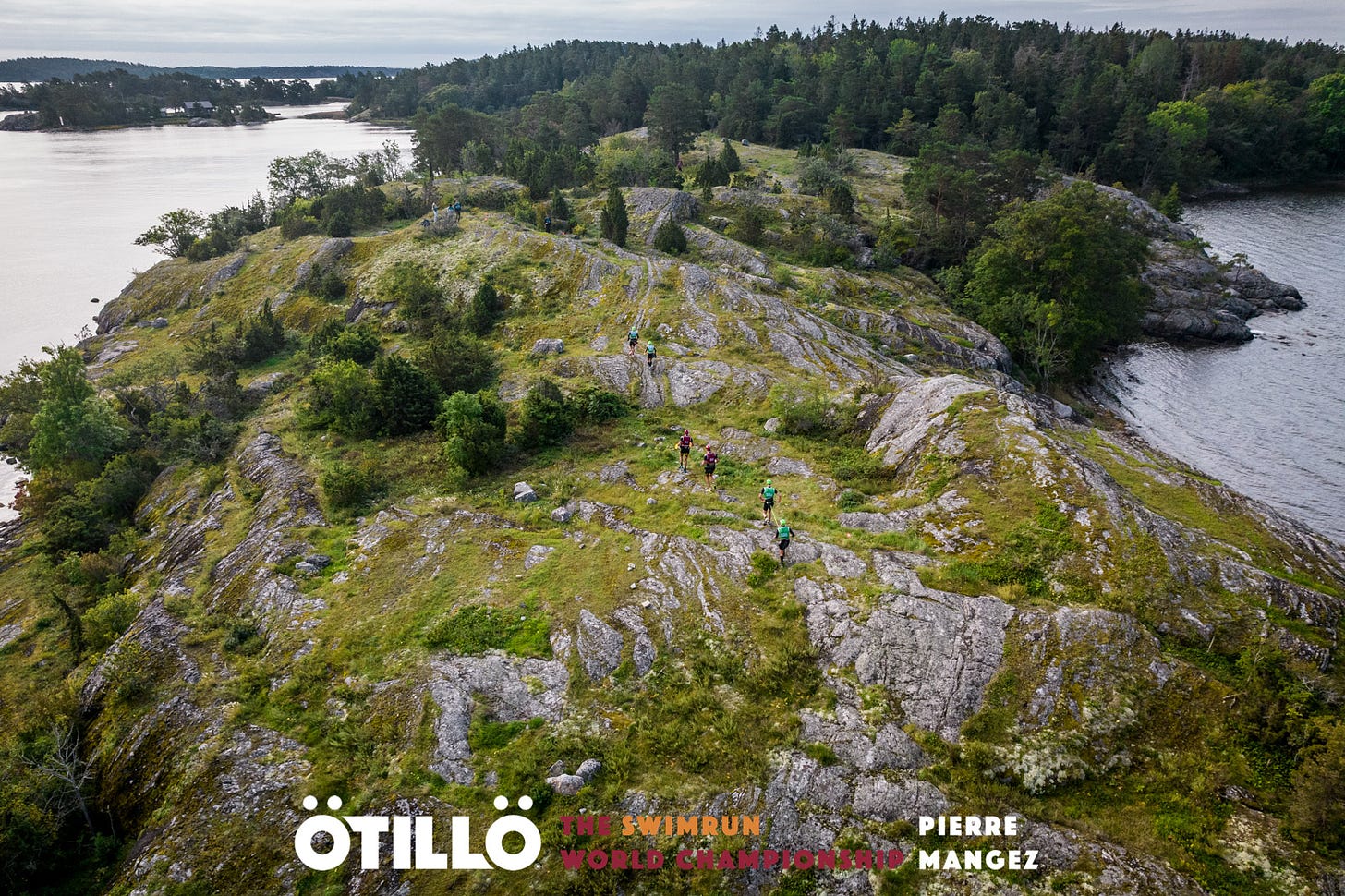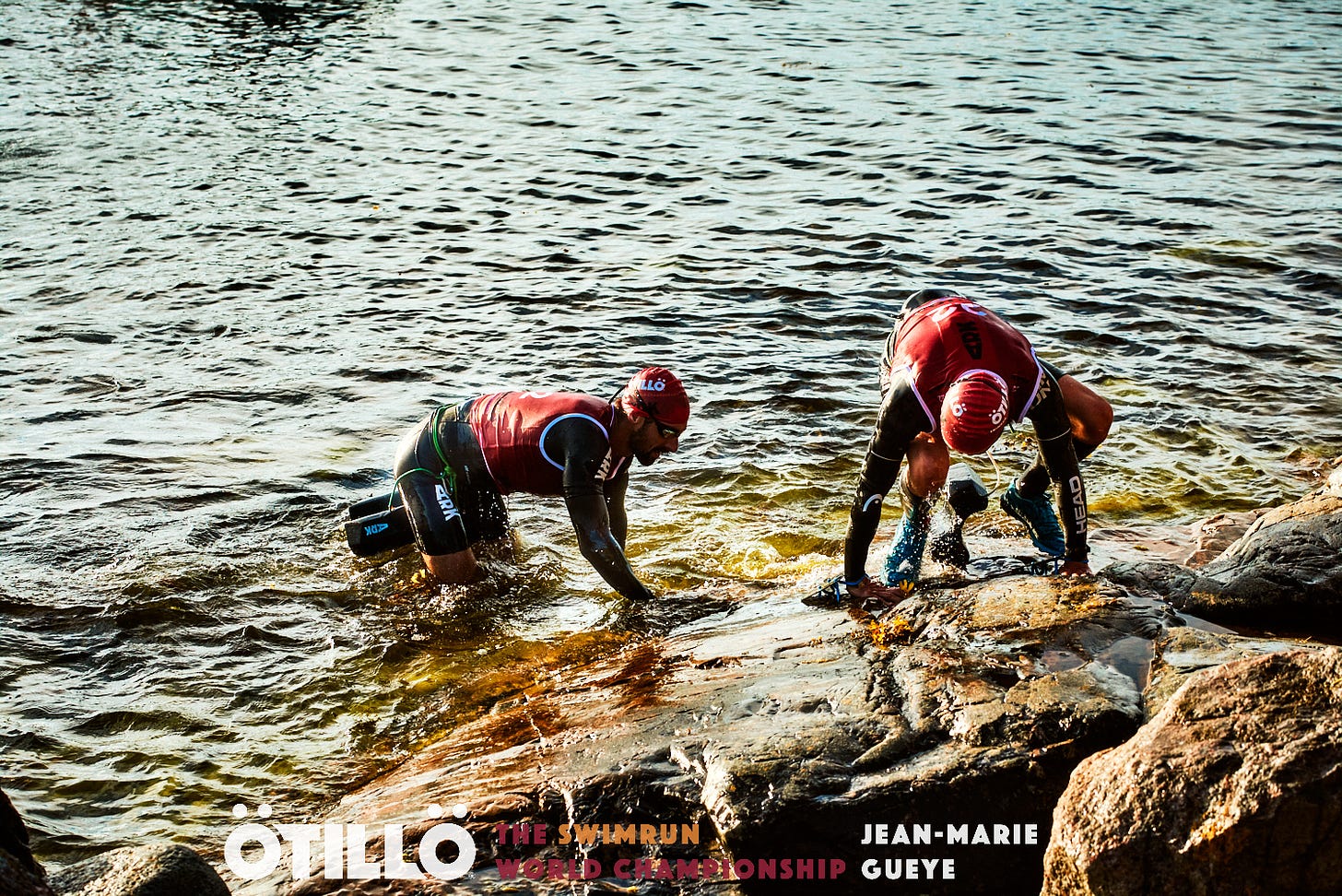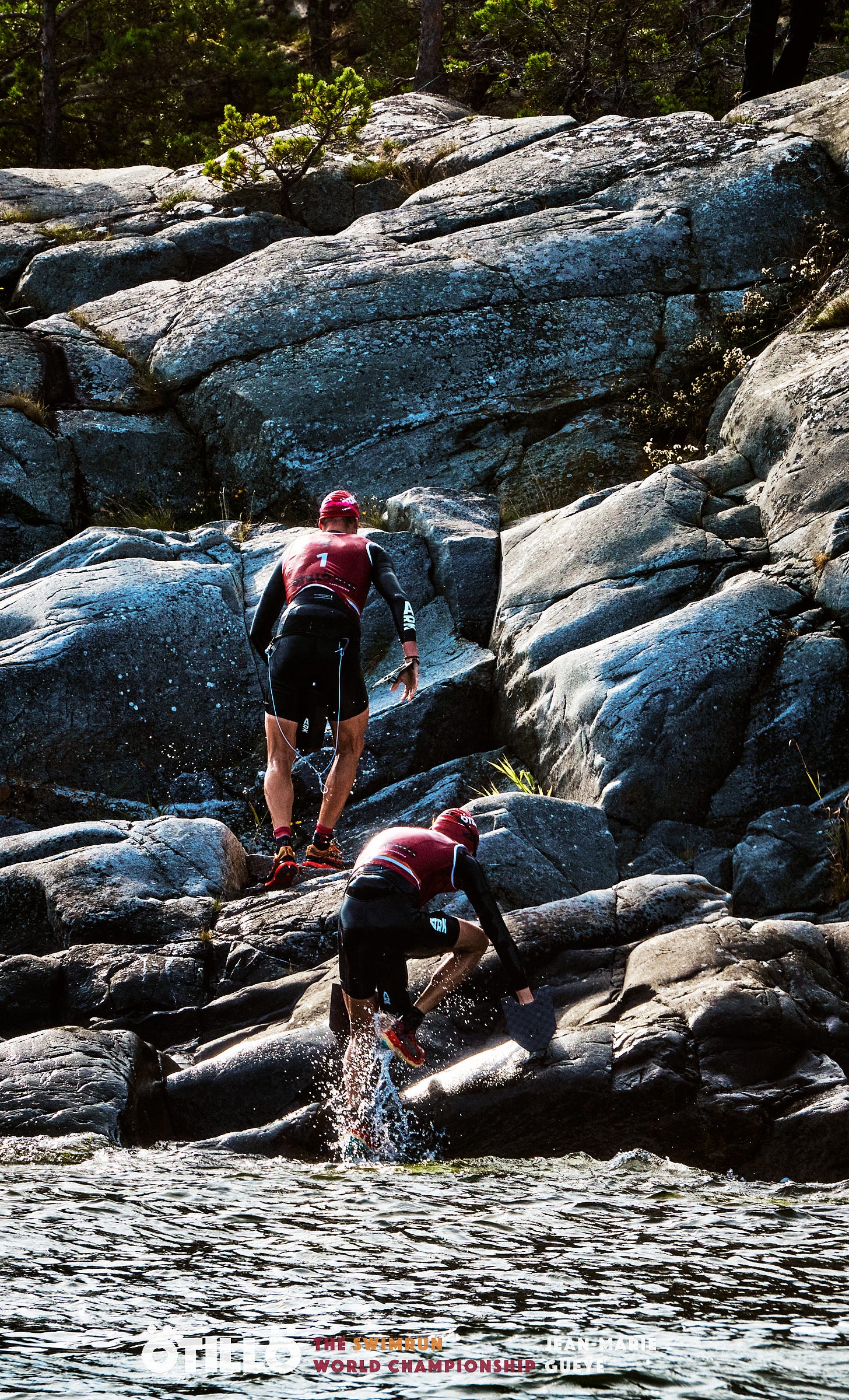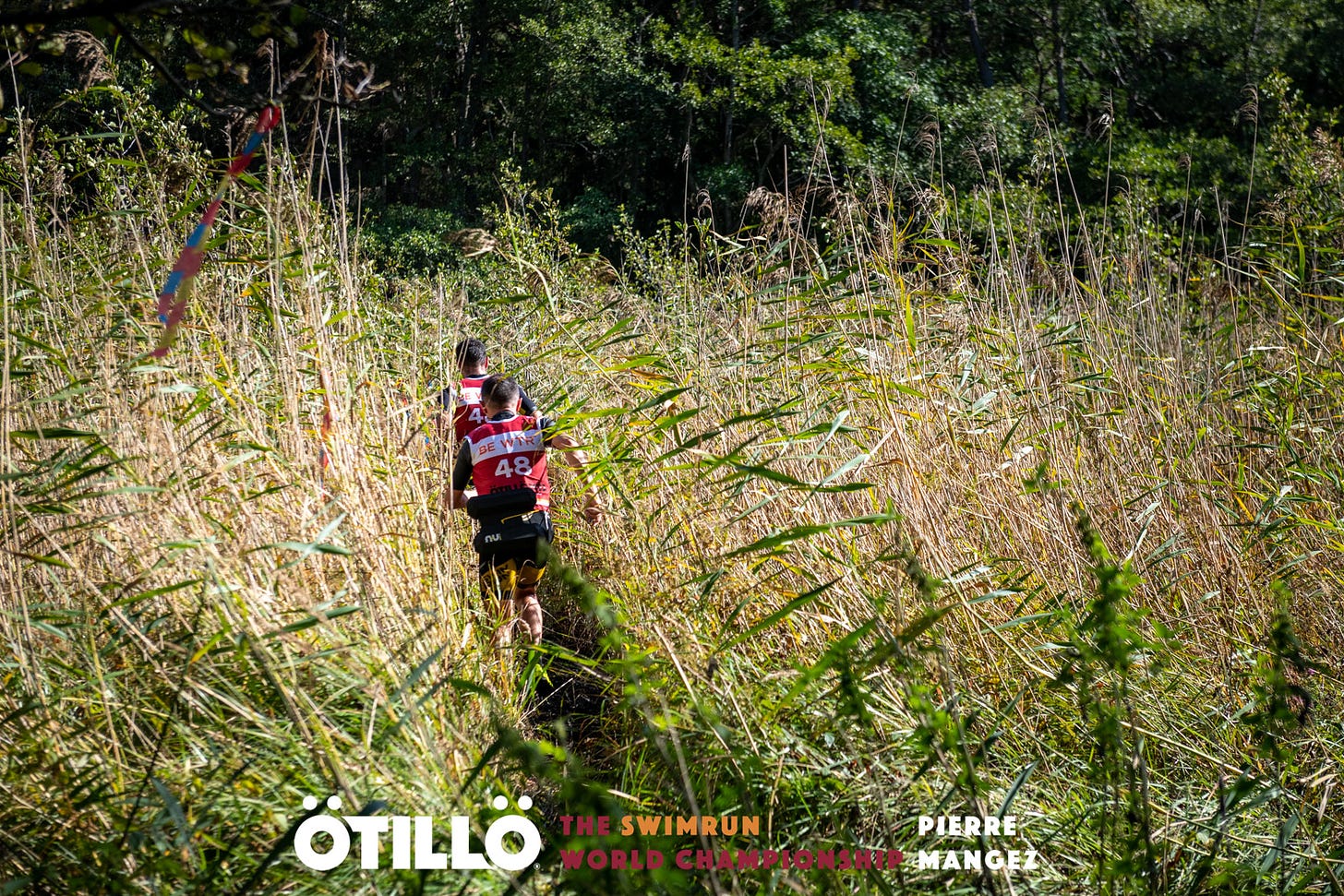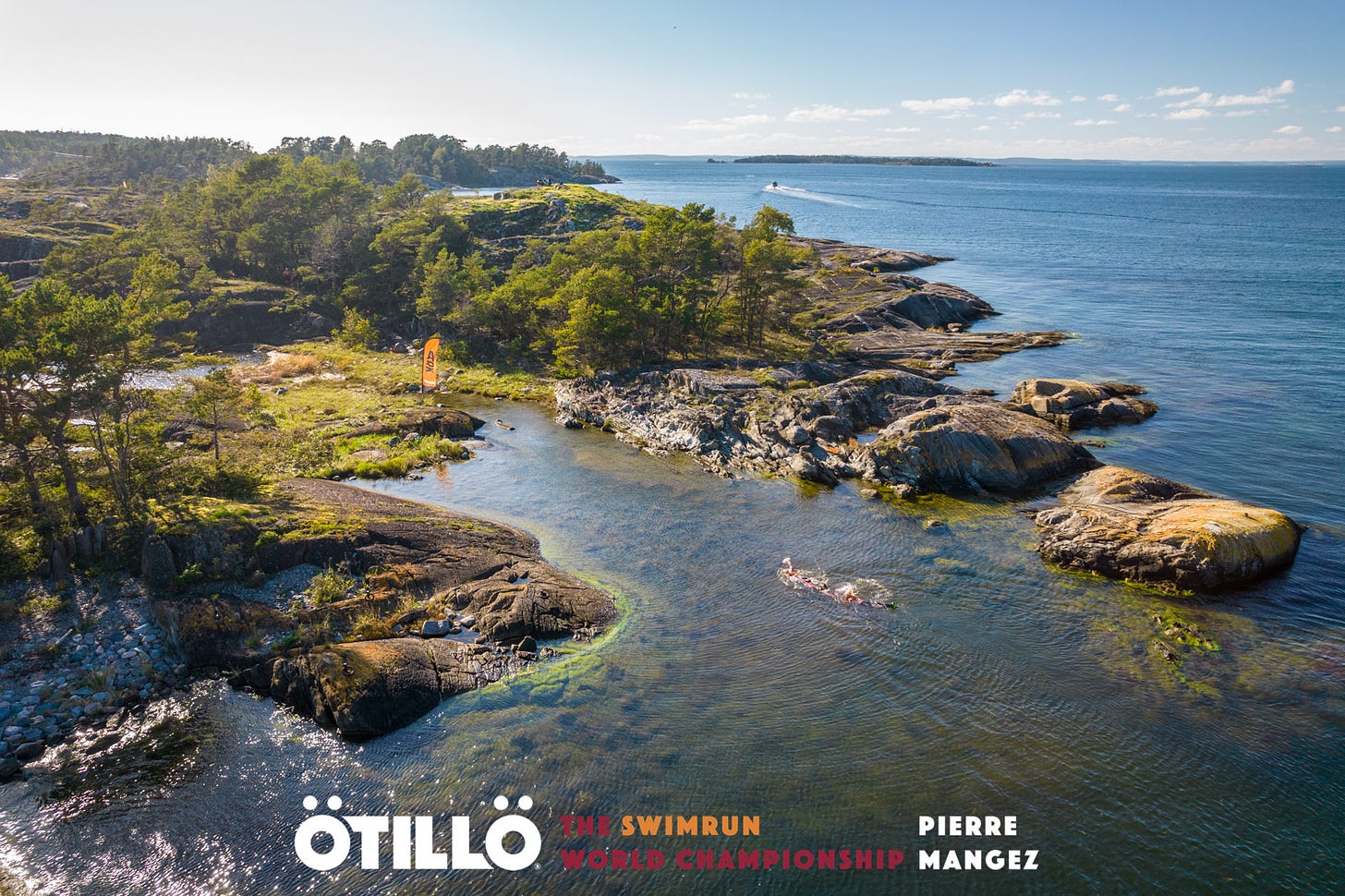The ÖtillÖ course consists of:
70 kilometers (9 km swimming, 61 km running)
24 Islands
46 Transitions
The course runs down the Stockholm Archipelago. There is a wide mix of running terrain; rocks, roads, and trails. The pictures in this piece will give you a good idea what to expect.
I’m going to focus on event specific tips. In Part Two, I’ll share specifics about how an ultra event enables us to test hope against reality.
Terrain
My partner on the day was Jonas Colting, AKA Big J, AKA Zoolander.
As we made our way down the archipelago, Jonas would joke “This ain’t no parkrun.”He was absolutely correct.
In preparing for a technical SwimRun course, I recommend you split your running into thirds:
Flat running (road, trail or treadmill)
Hill running (trails)
Technical running (narrow trail or off-trail)
A different type of run fitness is required from your typical race:
Getting into/out of the water.
Class 2, and Easy Class 3, movement across rock.
Moving up, or under, down trees.
While there are segments where you can settle in, more than half of the running is trails/technical.
46 Transitions
The quality of your transitions is a big piece of your overall time.
Wet rocks, waves, kelp… at ÖtillÖ, it’s rarely a beach entry.
SwimRun Rewards Simplicity
The less you have to do with each transition… the faster your overall time.
If you are racing in the Baltic then skipping goggles is an option. Mine were half full on many of the swims and my eyes felt fine. My buddy, Justin Daerr, went “full Viking” and skipped goggles.
An important benefit of tightening your transitions is being able to swim with faster groups. A quick transition lets you get out in front of a faster group, making them work to get around you and giving you the option to draft off them for the second half of each swim leg.
Swim Training & Tactics
In the photos above you can see giant pullbuoys and very large paddles. If that’s your setup then train with it. One of my favorite endurance workouts was continuous open water swimming with wetsuit and paddles.
Certain swim legs can be lumpy and, as a result, quite draining. With an ultra, it’s more about getting the metabolic cost of the swim down, than seeking to get your swim speed up. Race day is so long, you’ll pay a big price if you aren’t efficient in the water.
Specific Tips:
If you’re unsure of your swim fitness then size down your paddles for race day.
Train with the buoy you will use. I sized up my buoy on race day. It worked great but… my back was absolutely jacked post-race. I should have trained more with my big buoy (Ark Keel+).
Train long-and-strong rather than fast. My key workout each week was a long swim of 5,000 to 6,500 meters. I’d swim an easy 1000 before a long masters workout, do the workout, then tack on extra volume.
I’d do back to back swim days that totaled 10,000 meters. These were very effective at giving me the strength endurance to swim strong the whole way down the archipelago.
In addition to SwimRun transitions, you will be doing 46 muscle transitions. Train these. With your race day gear, do short SwimRun events where you get used to alternating between swimming and running. This will speed your gear transitions and also prepare your body to switch between lower & upper body muscle groups.
The Tether
You are allowed to use a tether between athletes.
This can enable a faster swimmer to pull a slower one. It’s how I race shorter events with my son.
This can also enable a faster runner to pull a slower one.
Given the length of a race, it’s not always clear who’s going to be faster on race day.
Many teams discover the tether to be useful in ways they didn’t expect.
Test The Tether Length - this is so important.
You want to ensure that the person following is able to get a full stroke.
If you are a swimmer who crosses over at entry then you’ll need several sessions to correct this pattern and “enter wide.”
If you’re going to run technical trails with the tether then train it. I’ve seen runners pulled to the ground by a sudden tug from their lead runner.
Temperature
Colting sums up his wetsuit strategy as…
You never want to be comfortable, you either want to be too hot or too cold.
Don’t optimize for either swim, or run. Use a setup that’s a compromise between the two.
Specific Tips
A thick silicon swim cap makes a big difference in the water. You can beef this up with a neoprene under cap.
Toggling the cap on/off when you run is another way to control the temperature.
On longer runs, you might strip down the wetsuit. The SwimRun specific wetsuits have zippers front/back to make this easier for you.
Ark makes a thermal vest to wear under your wetsuit. If you run cold then this is an option to consider.
Gels & Gear Tips
Stick your gels in a soft flask and stow that flask in your SwimRun wetsuit pocket. This will save other racers, and race management, from having to clean up your gel packets down the archipelago.
My Colting Wetsuit (SR03) has a pocket at the base of my back. I carried:
12 gels in a soft flask
Epipen
Collapsible Cup
Spare goggles (tinted, I started with clear)
Jonas carried our mandatory medical kit as well as a spare swim cap.
Others add a length of stretch cord in case their tether breaks.
My shoe choice was the Adidas Terrex Trail Ultra. I picked a pair with bright soles to make it easier for my partner to see my feet when towing.
The Low Tide Boyz have a fabulous page on SwimRun gear. It’s part of a larger website devoted to all things SwimRun. Well worth your time.
See you at the races.
Back to Table of Contents






